Ultimate Guide:The Basic Concept of Aperture
Wednesday 23 October 2024
 1.7k
1.7k
 Reproduction without the author's authorization is prohibited
Reproduction without the author's authorization is prohibited
Aperture is essentially the opening within a camera lens that allows light to pass through and reach the camera sensor. It plays a fundamental role in determining the amount of light that enters the lens. Aperture is often symbolized by the f-stop (or f-number), which describes the size of the lens opening. For example, an aperture of f/2.8 is larger than f/16, allowing significantly more light to hit the sensor. Aperture, along with ISO and shutter speed, forms the "exposure triangle," which governs the brightness of your image.

Aperture and F-Stop
The f-stop is a mathematical representation of the aperture size. It’s expressed as the ratio of the focal length of the lens to the diameter of the entrance pupil. The formula is:
f/# = f/d
Where ( f ) is the focal length and ( D ) is the diameter of the aperture. Lower f-stop numbers like f/1.4 or f/2 represent larger apertures, while higher numbers like f/11 or f/22 represent smaller apertures. The f-stop scale is logarithmic; every increase by one full f-stop halves the light entering the camera, and every decrease doubles it. Understanding the relationship between aperture and f-stop is critical for controlling light and depth of field.
Aperture and Depth of Field (DOF)
Depth of Field refers to the portion of an image that appears sharp and in focus. Aperture has a profound impact on DOF. A larger aperture (smaller f-number, e.g., f/2.8) results in a shallow depth of field, where only a small portion of the image is in sharp focus, and the background is blurred. This is ideal for portraiture, where the subject stands out against a soft background. In contrast, a smaller aperture (larger f-number, e.g., f/16) increases the depth of field, keeping more of the image, from foreground to background, in focus. This is typically desirable in landscape photography, where sharpness throughout the scene is preferred.
Aperture in the Exposure Triangle
Aperture works in tandem with shutter speed and ISO sensitivity to control exposure. Shutter speed regulates the duration of light exposure, while ISO adjusts the sensitivity of the camera's sensor to light. Together, these three elements form the exposure triangle, a concept that photographers use to achieve proper exposure. For instance, in low-light situations, you might open the aperture (use a lower f-stop) to allow more light in while compensating with a faster shutter speed to prevent motion blur. Alternatively, a smaller aperture might require a slower shutter speed or a higher ISO to maintain the correct exposure.
Practical Applications of Aperture
Different photographic scenarios demand specific aperture settings. In portrait photography, wide apertures (e.g., f/1.8 or f/2.8) create a shallow depth of field that isolates the subject from the background, resulting in a pleasing bokeh effect. For landscape photography, smaller apertures (e.g., f/11 or f/16) ensure that both the foreground and background remain in sharp focus. In macro photography, controlling aperture becomes critical because extreme close-ups naturally have a very shallow depth of field. Selecting the right aperture for each situation is essential to achieving the desired visual effect.
Aperture and Lens Characteristics
Not all lenses are created equal when it comes to aperture capabilities. Prime lenses typically offer wider maximum apertures (e.g., f/1.4 or f/1.8), which are beneficial for low-light photography and achieving artistic shallow depth of field. Zoom lenses often have variable maximum apertures (e.g., f/3.5-5.6), meaning the aperture narrows as you zoom in. Constant aperture zoom lenses (e.g., f/2.8 throughout the zoom range) are more expensive but provide consistent exposure and depth of field across all focal lengths. Understanding the aperture range of your lenses allows you to make informed decisions about how to use them for different types of photography.

Aperture’s Impact on Image Quality
The choice of aperture influences various aspects of image quality beyond exposure and depth of field. At wide apertures (e.g., f/1.4 or f/2), lenses often exhibit more optical aberrations, such as chromatic aberration or vignetting. However, closing the aperture down slightly (stopping down) can improve sharpness and reduce aberrations. Many lenses achieve their "sweet spot" in terms of sharpness around f/5.6 to f/8, where diffraction is minimized, and the optical performance is at its peak. Additionally, aperture plays a role in creating aesthetic effects like bokeh, which is the quality of the out-of-focus areas in an image, often enhanced by larger apertures.
In addition to aperture, there are also ISO and shutter speed. These three elements together are called the exposure triangle. Click this blog to view detailed content about shutter speed: How Does Shutter Speed Work? How Does Shutter Speed Affect Your Photos?
Statement: all contents and remarks made by K&F CONCEPT 's intranet friends only represent themselves and do not reflect any K&F CONCEPT 's opinions and views.
-
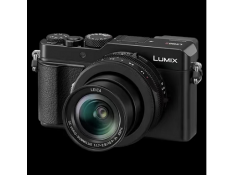 Panasonic to release the LX100M3 camera on October 17thTuesday 14 October 2025
Panasonic to release the LX100M3 camera on October 17thTuesday 14 October 2025 -
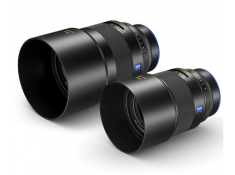 Zeiss is about to release a new Otus ML series lensMonday 13 October 2025
Zeiss is about to release a new Otus ML series lensMonday 13 October 2025 -
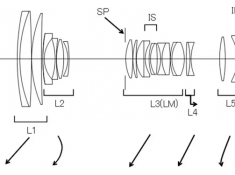 Canon Publishes Patents for 28-400mm F3.5-6.31S and 28-400mm F4-81S LensesMonday 13 October 2025
Canon Publishes Patents for 28-400mm F3.5-6.31S and 28-400mm F4-81S LensesMonday 13 October 2025 -
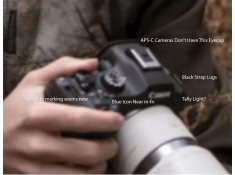 First spy photos of the Canon EOS R6 Mark III have been releasedFriday 10 October 2025
First spy photos of the Canon EOS R6 Mark III have been releasedFriday 10 October 2025 -
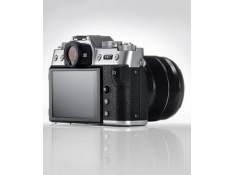 Fujifilm to release the X-T30 III around October 23rdFriday 10 October 2025
Fujifilm to release the X-T30 III around October 23rdFriday 10 October 2025






